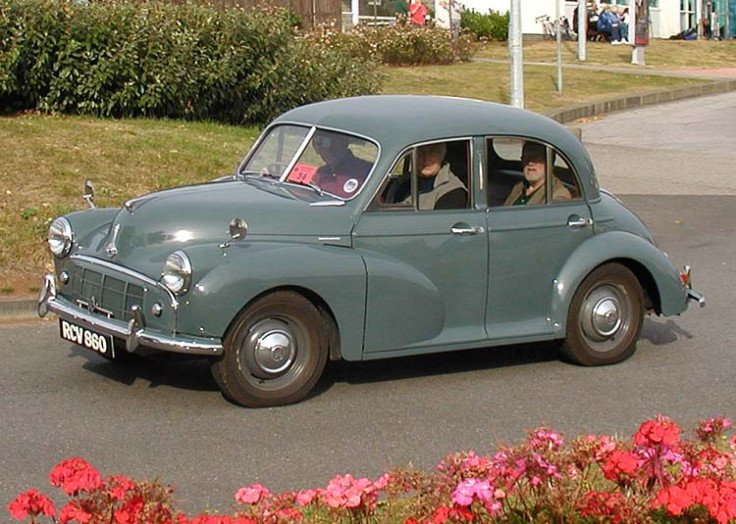Morris Minor: A British Classic Car Thriving In Sri Lanka

The “Morris Minor” is a classic piece of Britannia -- the small-sized family automobile was one of the most popular vehicles in post-war Britain, with about 1.3 million manufactured between 1948 and 1972 (making it the first U.K. car ever to sell more than 1 million units).
Sir Alexander Arnold Constantine Issigonis, the Greek-born engineers, designed the Minor as an “affordable luxury car” for the British working classes. Initially a two-door convertible model, later versions of the Minor included a four-door variant.
British television personality Jeremy Clarkson once famously compared the Morris Minor with Germany’s classic compact Volkswagen Beetle.
Produced by then iconic British Motor Corp. (which has since been merged into British Leyland), the Minor remains a favorite of auto enthusiasts and restorers around the world, particularly in the U.K., Australia, New Zealand and India.
In another far-flung corner of the former British Empire, the island nation of Sri Lanka, the Morris Minor remains extremely popular, with one factory still manufacturing parts (by hand) for the classic car, more than 40 years after production ceased.
The Daily Telegraph reported that a factory near the tourist city of Galle on the southern coast of the country -- called the Durable Car Co. -- makes 89 parts of the Minor. Founded in 1992 by a retired Sri Lankan diplomat named Dhanapala Samarasekara, the factory employs almost two-dozen skilled people.
“People who can afford it bring their car to us for refurbishment because they love it," said employee manager named Somasiri. One of his customers was the nephew of Sri Lankan president, Mahinda Rajapaksa.
The Telegraph estimated that as many as 4,000 Minors are still in use in Sri Lanka.
"[The Minor] was very, very popular before the arrival of the Japanese cars," Somasiri added. "It was reasonably priced, durable and people were very fond of it because it was easy to drive with low running costs. People know it as a British car and they believe it is good that it is kept as an antique."
In a publication called “Minor Monthly,” an English auto enthusiast named Bob Beavan wrote of a trip he took to Sri Lanka.
“The journey from Colombo to Kandy, the old hill capital … is some 72 miles, and the journey was interrupted on many occasions with our driver Amal stopping whenever a Morris Minor appeared at the side of the road,” Beavan wrote. “The journey took over three hours spotting 15 Minors on the road and numerous ones either rusting in peace or awaiting restoration.”
Beavan pointed out a peculiarity of Sri Lankan government policy that inadvertently allowed a nearly sixty-year-old auto to flourish.
From the early 1960s to the early 1980s, Colombo prohibited the importation of new vehicles, excluding those used for agriculture.
“This meant the early, pre-sixties cars had to be maintained to the highest standard,” he said.
“The Sri Lankans ability with their hand is second to none, and during the period of no vehicle imports, accident damage or repairs would often be completed by fabricating or making replacement parts. This continues today.”
In Sri Lanka, one not only sees Morris Minors on the roads, but also other classic British vehicles, like Austin Cambridges, Oxfords, Wolseleys and Ford Anglias, among others. Many are used as taxis.
“However, the Morris Minor is undoubtedly the most popular,” Beavan determined.
© Copyright IBTimes 2024. All rights reserved.





















